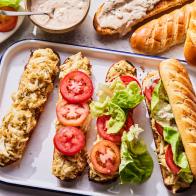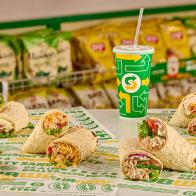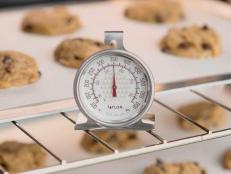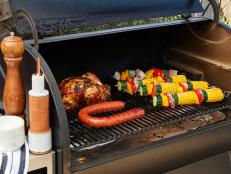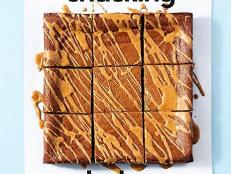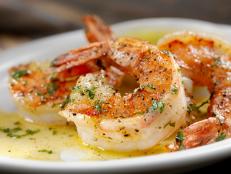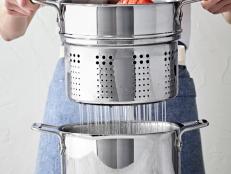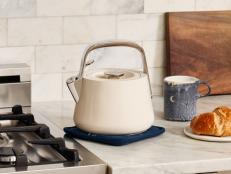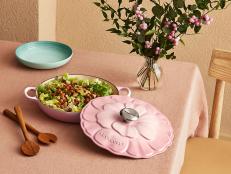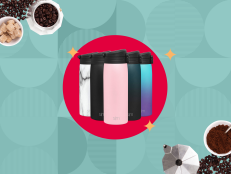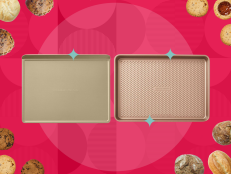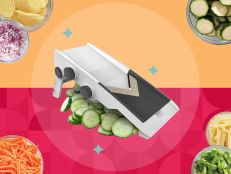This Collapsible Dehydrator Is My New Favorite Way to Preserve Food
If you're still canning and freezing your produce, a dehydrator will change your life.


Heath Goldman
There is only so much room in every home kitchen for large appliances. Think about the amount of storage space you have in your kitchen, and then mentally cut it in half – that’s how much storage space I have in my entire New York City apartment. I’m not trying to turn this into a competition, but rather demonstrate the premium I place on cabinets, closets and shelves. Every single one of my appliances and tools must pull its weight to stick around. For example: I only use my giant stock pot occasionally when I work up the energy to make homemade chicken broth; however, when it’s off duty, it stores the Christmas tree stand, lights and seven ornaments I have to my name. I kid you not.

Heath Goldman
A dehydrator, to be honest, is the type of appliance I’d normally punt into my dream future when I’ll magically acquire a country house filled with closets and a real pantry. If you’ve ever looked into buying a dehydrator, you’ll know that they’re enormous, shaped either like an oversized toaster oven or the largest salad spinner you’ve ever laid eyes on. But enter the Brod & Taylor Sahara Folding Dehydrator, which arrives folded up – about the size of a textbook (see above) – and fits into a sleek black case for easy storage. In just a few easy steps that are clearly illustrated, the Sahara expands into a full-sized dehydrator with seven shelves. When you’re done using it, you can fold it back up again and stash it away somewhere discrete (mine is currently in resting on top of my refrigerator).
Wait, Why Do I Need a Dehydrator?
Dehydrating is one of the easiest and best ways to preserve fresh produce. If you're constantly Googling how to freeze fresh herbs or can your latest tomato haul, here's a secret: Dehydrating works for fresh produce and often makes for better results. You can’t really freeze herbs, for example, but if you have an enormous bunch of basil, you bet you can dehydrate it. You can dehydrate all the grapes and mushrooms you bought because they were on sale. Instead of canning summer tomatoes, you can dehydrate them – and the process concentrates flavor, meaning those dehydrated tomatoes will taste more tomato-y than any other tomato you’ve had.
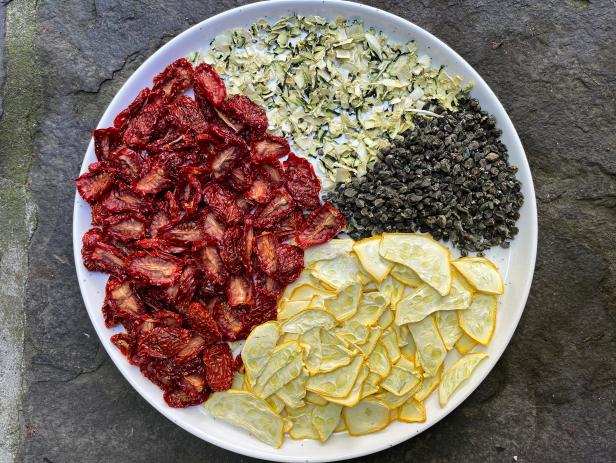
Heath Goldman
Additionally, dehydrating is great for snackers and anyone with kids. It’s an easy way to turn a big bag of apples or several bunches of bananas into healthy, inexpensive fruit chips. I don’t have kids yet, but I like snacking, so the dehydrator has been a good way to keep me reaching for healthy options instead of my greatest vice, potato chips. I’m dying to try Food Network Kitchen’s recipe for Pineapple-Berry Dehydrator Fruit Leather.
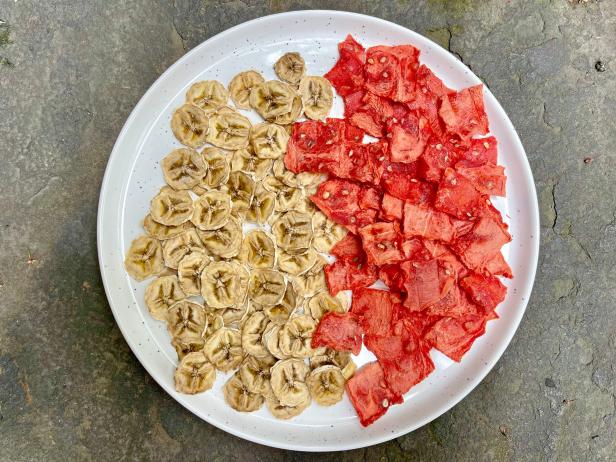
Heath Goldman
Finally, if you like backpacking or camping, a dehydrator will truly be your best friend. You can dehydrate all sorts of veggies, including zucchini, summer squash, kale and broccoli, then turn them into homemade meals on the trail. Unlike freeze dried vegetables, dehydrated veggies actually taste like, well, real veggies. I went backpacking this past spring and created the most magical one-pot trail pasta by covering dried pasta and several cups of dehydrated veggies with water and boiling everything together until the water evaporated. It was as easy as ripping open a freeze-dried meal but tasted like something I’d make in my own kitchen and didn’t upset my stomach.

Heath Goldman
What’s It Like to Dehydrate with the Brod & Taylor Sahara?
In a word: easy. To put things into perspective, the most challenging part is slicing the food into thin, even slices. For that, a mandolin is your best friend. Then spread out your food on one of the included silicone mats, place it on top of one of the dehydrator shelves and select the time and temperature (the instruction booklet comes with suggestions for common foods, and you can also find recipes on the Brod & Taylor website). Most foods will dehydrate for hours at a very low heat; luckily, the dehydrator makes a muted humming noise and is safe unattended so you can leave the house while it’s running. To cook with dehydrated food, you simply rehydrate it first by soaking it in hot water for a few minutes or mixing it into something wet like a soup, sauce or boiling pasta.
The Mandolin I Use to Prep Veggies for Dehydration
This inexpensive but powerful tool is a fast way to slice firm produce (like zucchini and summer squash) into even, thin planks. Slice softer foods like watermelon or strawberry by hand.
Air Fryers That Also Dehydrate
You can dehydrate foods using an air fryer, too. These models come equipped with a dehydrate function, in addition to the common air fry, bake and roast.
Related Links:




